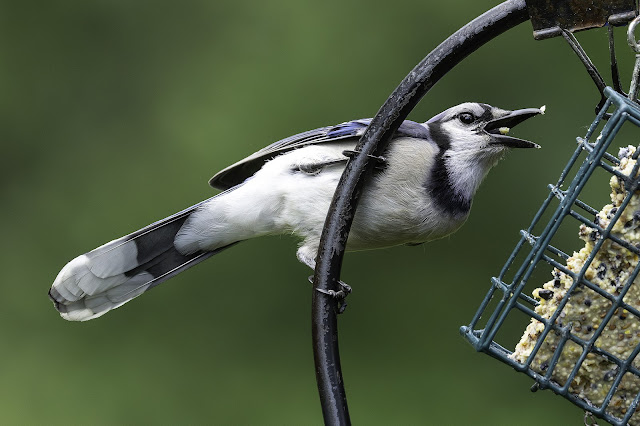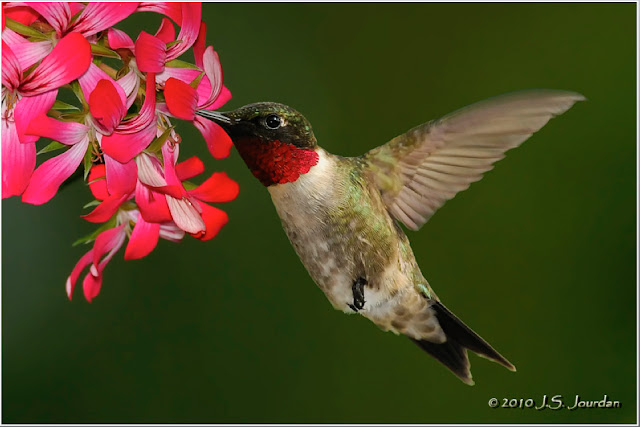Be Stilt My Sinking Feet - 06 Aug 2025
"Thanks for your reply and photo. I agree there are some Long-billed Dowitchers present, but some of the reasoning is not quite solid. Both species start molting before reaching the winter grounds, so you can also see some Short-billeds with gray plumage beginning. Also, Long-billeds really don’t have white axillaries – both species have barring on the axillaries, but Long-billeds tend to be less marked (probably not a simple assessment from any distance and quick views). The whiter region that has been touted as more suggestive of Long-billed (but also perhaps not fool-proof) is the whiter leading edge to the underwing on Long-billeds.
The feature that does make me feel you have some Long-billeds is the barring present on the breast-sides. From that lone photo, it’s not clear how many different individuals are present.
Hope this helps,
Adam"
Aug 6, 2025 8:14 AM - 10:17 AM
Protocol: Traveling
4.051 mile(s)
Checklist Comments: Overcast, humid, 73F, showers forecasted.
47 species (+1 other taxa)
Canada Goose (Branta canadensis) 18
Blue-winged Teal (Spatula discors) 16
Mallard (Anas platyrhynchos) 9
Green-winged Teal (Anas crecca) 6
Common Gallinule (Gallinula galeata) 4
American Coot (Fulica americana) 22
Black-necked Stilt (Himantopus mexicanus) 4 2ad and 2 juv in Cell 3 continue.
American Avocet (Recurvirostra americana) 1 Cell 3 continuing. Losing orange neck.
Killdeer (Charadrius vociferus) 6
Semipalmated Plover (Charadrius semipalmatus) 8
Short-billed Dowitcher (Limnodromus griseus) 62 52 in Cell 3 and 10 in Lautenschlager. All hendersoni.
Long-billed Dowitcher (Limnodromus scolopaceus) 3 Continuing Cell 3 among SBDO. Grayer, bulkier and show white armpits during wing stretch (SBDO have barred axillaries).
Spotted Sandpiper (Actitis macularius) 2
Lesser Yellowlegs (Tringa flavipes) 23
Stilt Sandpiper (Calidris himantopus) 56 52 roosting together on sandbar in Cell 3 after Peregrine flushed everything. All in basic plumage but still show zebra striping on bellies, flanks. Four more among SBDO flock.
White-rumped Sandpiper (Calidris fuscicollis) 1
Least Sandpiper (Calidris minutilla) 4
Pectoral Sandpiper (Calidris melanotos) 1
Semipalmated Sandpiper (Calidris pusilla) 24
Ring-billed Gull (Larus delawarensis) 18
American Herring Gull (Larus smithsonianus) 12
Caspian Tern (Hydroprogne caspia) 36
Pied-billed Grebe (Podilymbus podiceps) 4
Double-crested Cormorant (Nannopterum auritum) 1
Green Heron (Butorides virescens) 2
Great Egret (Ardea alba) 4
Great Blue Heron (Ardea herodias) 26
Bald Eagle (Haliaeetus leucocephalus) 2
Peregrine Falcon (Falco peregrinus) 1
Willow Flycatcher (Empidonax traillii) 1
Eastern Kingbird (Tyrannus tyrannus) 2
Warbling Vireo (Vireo gilvus) 1
Bank Swallow (Riparia riparia) 2
Tree Swallow (Tachycineta bicolor) 2
Purple Martin (Progne subis) 1
Barn Swallow (Hirundo rustica) 2
swallow sp. (Hirundinidae sp.) 50
Marsh Wren (Cistothorus palustris) 2
European Starling (Sturnus vulgaris) 7
American Goldfinch (Spinus tristis) 2
Savannah Sparrow (Passerculus sandwichensis) 1
Song Sparrow (Melospiza melodia) 2
Swamp Sparrow (Melospiza georgiana) 1
Brown-headed Cowbird (Molothrus ater) 6
Common Grackle (Quiscalus quiscula) 2
Common Yellowthroat (Geothlypis trichas) 2
Yellow Warbler (Setophaga petechia) 1
Indigo Bunting (Passerina cyanea) 3
View this checklist online at https://ebird.org/checklist/S2
This report was generated automatically by eBird v3 (https://ebird.org/home)




























